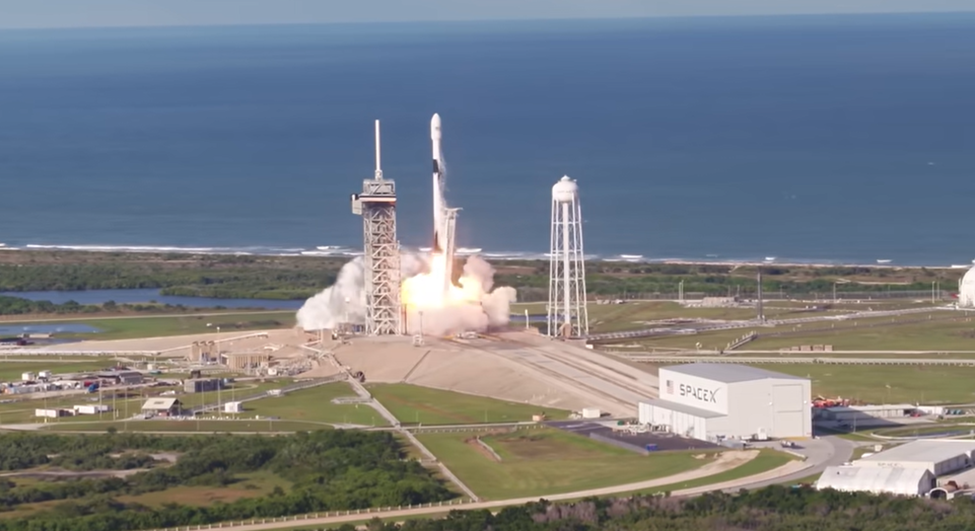Highlights
- ISRO will launch its heaviest satellite GSAT-N2 via SpaceX’s Falcon 9 rocket.
- The 4,700 kg satellite worth $60-70 million will support in-flight internet connectivity.
- GSAT-N2 will have a mission life of 14 years enhancing India’s communications technology.

ISRO has partnered with SpaceX for the commercial launch of its most advanced communications satellite GSAT-20 (also called GSAT-N2).
The satellite will be launched early next week aboard SpaceX’s Falcon 9 rocket from Cape Canaveral, USA.

The 4,700 kg GSAT-N2 satellite built by ISRO is too heavy for India’s largest rocket the Launch Vehicle Mark-3 (nicknamed “The Bahubali”). It can carry a maximum of about 4,100 kg to a geostationary transfer orbit. India has always relied on Arianespace for heavy launches.
However, SpaceX this time has emerged as the most viable option considering no operational rockets are currently available there and the Chinese rockets are off-limits.
Chairman and Managing Director of New Space India Ltd (NSIL) ISRO’s commercial arm Radhakrishnan Durairaj said, “We got a good deal on this maiden launch with SpaceX.”
Describing the deal with SpaceX as favourable, Durairaj also said, “The price for launching this particular satellite… the technical compatibility and also the commercial deals… I would say it was a good deal for us, for launching such a heavy satellite on SpaceX’s Falcon 9 rocket.”
GSAT-N2 has a mission life of 14 years and is equipped with 32 user beams—eight for narrow spot coverage over the northeast and 24 wide spot beams for the rest of India. Supported by hub stations in mainland India, the satellite will also facilitate in-flight internet connectivity.
The launch is estimated to cost $60–70 million, making it a significant investment in India’s space and communications technology.
This collaboration comes as Elon Musk’s SpaceX continues efforts to bring its Starlink satellite-based internet services to India. Musk has already expressed enthusiasm for Starlink’s potential in India saying, “I look forward to bringing Starlink to India where it will help remote villages.”
However, India’s Telecom Minister Jyotiraditya Scindia clarified that Starlink must first meet the country’s stringent security norms before being granted a license. Scindia said, “We are more than happy to give them (licence) if they (Starlink) comply with all the conditions. You have to look at it from a security perspective, making sure that all security concerns are addressed. When they do that, we will be more than happy to give it. Obviously, they are in the process of doing it.”
Security Concerns Around Starlink

Meanwhile, a report by the Kutniti Foundation has raised concerns about Starlink’s operations. The report described Starlink as “a wolf in sheep’s clothing.” The report highlighted that Starlink’s dual-use technology serves both civilian and military purposes, with strong ties to the U.S. government.
The report stated, “Starlink’s constellation of satellites enables a new, borderless internet access, bypassing local governance structures and granting direct access between individual users and American authorities.”
The report warned that Starlink’s infrastructure could potentially be used for surveillance or strategic purposes, posing risks to India’s national security.
FAQs
Q1. Why is ISRO using SpaceX’s Falcon 9 rocket to launch the GSAT-N2 satellite?
Answer. The 4,700 kg GSAT-N2 satellite is too heavy for India’s largest rocket, the Launch Vehicle Mark-3, which can carry a maximum of about 4,100 kg to a geostationary transfer orbit.
Q2. What are the security concerns related to Starlink in India?
Answer. A report by Kutniti Foundation highlighted that Starlink’s dual-use technology serves both civilian and military purposes and could potentially be used for surveillance or strategic purposes, posing risks to India’s national security.
Q3. What is the mission life and some capabilities of the GSAT-N2 satellite?
Answer. GSAT-N2 has a mission life of 14 years and is equipped with 32 user beams. It will support in-flight internet connectivity and enhance India’s communications technology.
Read More: Starlink Internet Coming to India: Discover All About Elon Musk’s Satellite Internet Service
